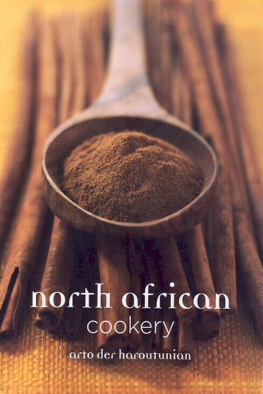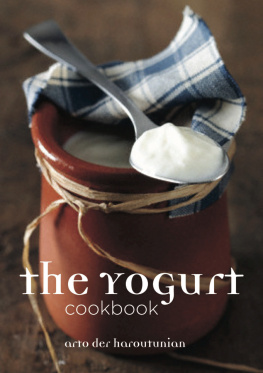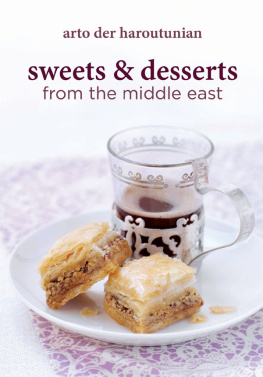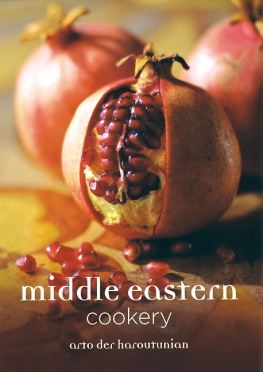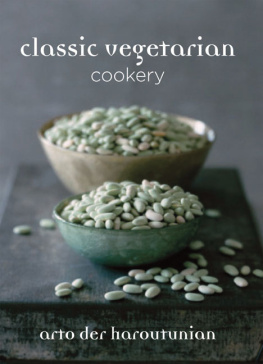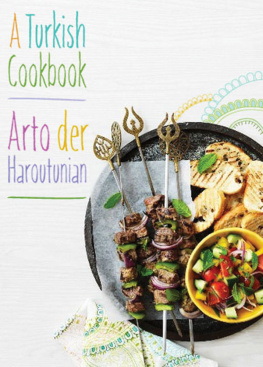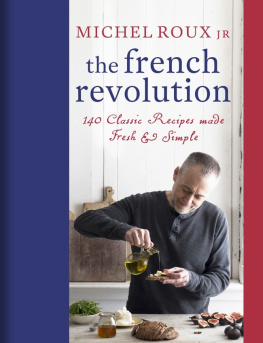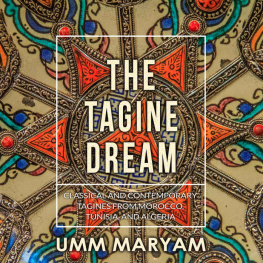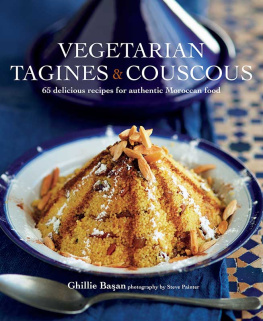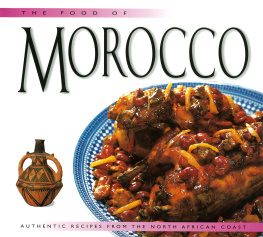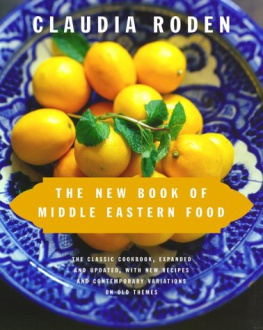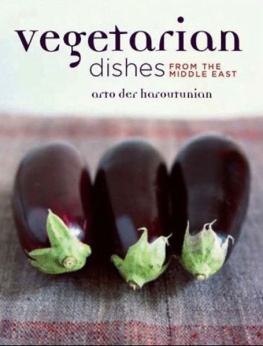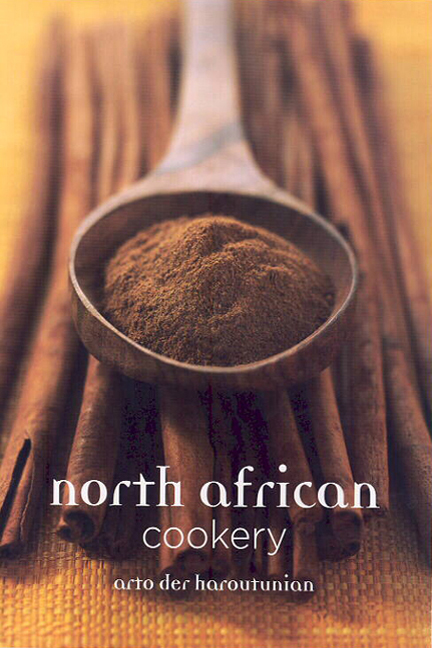First Published in Great Britain in 1985 by Century Publishing Co. Ltd
All rights reserved. No part of this book may be reproduced or transmitted in any form or by any means, electronic or mechanical, including photocopying, recording or any information storage and retrieval system, without permission in writing from the publisher.
Acknowledgements
Many thanks are due to all the authors and publishers from whose works I have quoted (see ), and apologies to those who unintentionally may have been overlooked.
All works from Arabic and French have been edited and translated by myself.
I must also thank all the kind people of North Africa who helped in many a small way in the shaping and writing of this book. Special thanks as well to Odile Thivillier and Rina Srabonian.
introduction
history and people of the meghrib

The only conceivable geographical unity in the Meghrib can be described as a repetitive pattern of mountains, plains, steppes and desert, and a related pattern of economic activity.
AfricaA Geographical Study
The Berber tribes in the West are innumerable, they are all Bedouins, members of groups and tribes. When one tribe is destroyed another takes its place and is as refractory and rebellious as the former one had been. It has taken the Arabs a long time to establish their dynasty in the land of Ifrigiyah and the Meghrib.
The Mugaddimah
The Meghrib (the land of sunset in Arabic) extends over a coastal strip of about 4,200 kilometres along the southern shores of the Mediterranean. The Meghrib consists of four modern statesMorocco, Algeria, Tunisia and Libya.
Climatically there are three parallel east-west regions: the first is the Mediterranean coast, which represents one-fifth of the total area of Morocco, Algeria and Tunisia. In Libya, predominantly a desert land, this region exists only in a very narrow strip. The second is the intermediate, which incorporates the Atlas system of mountains in Morocco which extends towards Algeria and western Tunisia. The third and last is the Sahara desert in the south. The vegetation of the Meghrib, as with the rainfall, diminishes progressively from north to south. It is vital to appreciate the geography of the region since the entire history of its people has been shaped by these topographical divisions.
Early History
When the Meghrib first came into the light of history after the arrival of the Phoenicians (who built trading posts on its coastline in the first millennium BC), it was already inhabited by groupings of people who are today called Berbers. The Phoenicians were merchant adventurers par excellence, thus were not particularly interested in the lands and people with whom they traded. As a result, the Carthaginians, who were related to the Phoenicians, gradually established their rule not only over the Phoenician trading settlements, but, in time, over most of the Meghribian coastline.
The city of Carthage had been founded (near the modern Tunis) at the end of the ninth century BC by emigrants from Tyre (southern Lebanon). They cultivated commerical and blood relationships with the Berber tribes by intermarriage. They also dealt with the Negroes of western Africa by means of caravans that crossed the Sahara. The political structure of Carthage survived unaltered until she was conquered and destroyed by Rome. Throughout her long period of domination, Carthage remained strictly a commercial power, though during the fifth century BC, and more so during the last century of her existence, much more emphasis was put on agriculturelarge areas of Northern Tunisia and the Sahil were planted with fruit, olive trees and cereals.
The Carthaginians, besides being excellent traders, were also known for their intense religiosity and superstitiousness, characteristics which survived their physical extinction, and which were passed onto and spread amongst the indigenous people (Berbers) of the Meghrib, causing havoc and great social unrest in post-Islamic Meghrib, particularly between the eighth and fifteenth centuries.
After two centuries of bloody confrontation Carthage finally fell to the might of Rome. The outstanding personality of the period was Hannibal, whose crossing of the Pyrenees in the spring of 218 BC with 40,000 men and elephants on the way to Rome has become a legend of inspiration and determination. Much was made of this epoch of Meghribian history by Algerians, Moroccans and Tunisians during the Wars of Liberation of the twentieth century. Carthage resisted for three years, but was finally destroyed in 146 BC, fires raging for five days after her surrender.
What remained after the destruction of this most important of the Liby-Phoenician cities, was the impact of her civilisation which spread widely among the Berbersand the Punic language.
A History of the Meghrib
In the early period Rome ruled only the Meghribi coastline (excepting Tunisia), but wanted a more definite frontier to enclose her territories. The Fossa regia (royal ditch) was begun by Scipio Africanus, and later limes (Roman fortifications) were also constructed. The region was divided up into four provinces, and security was provided by the third Augustan legion. The legionaries were Roman citizens and a fair percentage were of Berber origin. By the middle of the second century AD it was the Africans who ensured order in Africa on behalf of Rome ( LAfrique Romaine ).
Economically Roman Africa was an agricultural domain. Wheat, olive oil, wine, marble, wood and mules were all exported to Rome, and large agricultural estates appeared in the Meghrib. Many towns were built with all the necessary social conveniences such as forums adorned with honorific monuments, market places and temples. The lack of water did not stand in the way of the Roman rulers. If water was not available or close at hand they brought it from afar. The great aqueducts striding across the desolated plains and mountain ranges remain as impressive monuments to the genius of Rome. These dams and cisterns made possible the building of the dead cities which astonish us today. That these works are now in ruins is not due to the failure of the rainfall and the springs. It is sometimes due to earth movements, but more usually to the hand of Man. For nearly 2,000 years the people of the country have been using Roman monuments as stone quarries for the building of houses and mosques. But wilful destruction by invaders also played havoc with the magnificent buildings the Romans left behind them ( The Golden Trade of the Moors ). These wilful destroyers were the Vandals, followed centuries later by the nomadic Arabs and Ottoman Turks. The civilised life which the Romans developed in the Meghrib during four centuries suffered an unmistakable setback in one century of Vandal rule ( A History of the Meghrib ).
The Vandals, following attacks by the Visigoths, left Spain and entered the Meghrib in the expectation of finding in it both security and abundant food. Led by King Gaiseric they occupiedthrough pillage, war and marauding expeditions into Roman and Berber territoriesmost of the Meghrib. For a time they even possessed Sicily, Corsica and Sardinia. But their suzerainty withered away under persistent Byzantine attacks. The Vandal period is noted for the virulent conflicts between Arianism and the Catholic Church; an important social element for it helped to ease, a century or so later, the advancement of Islam in the region and the total effacement of Christianity from some of its strongest outposts.

